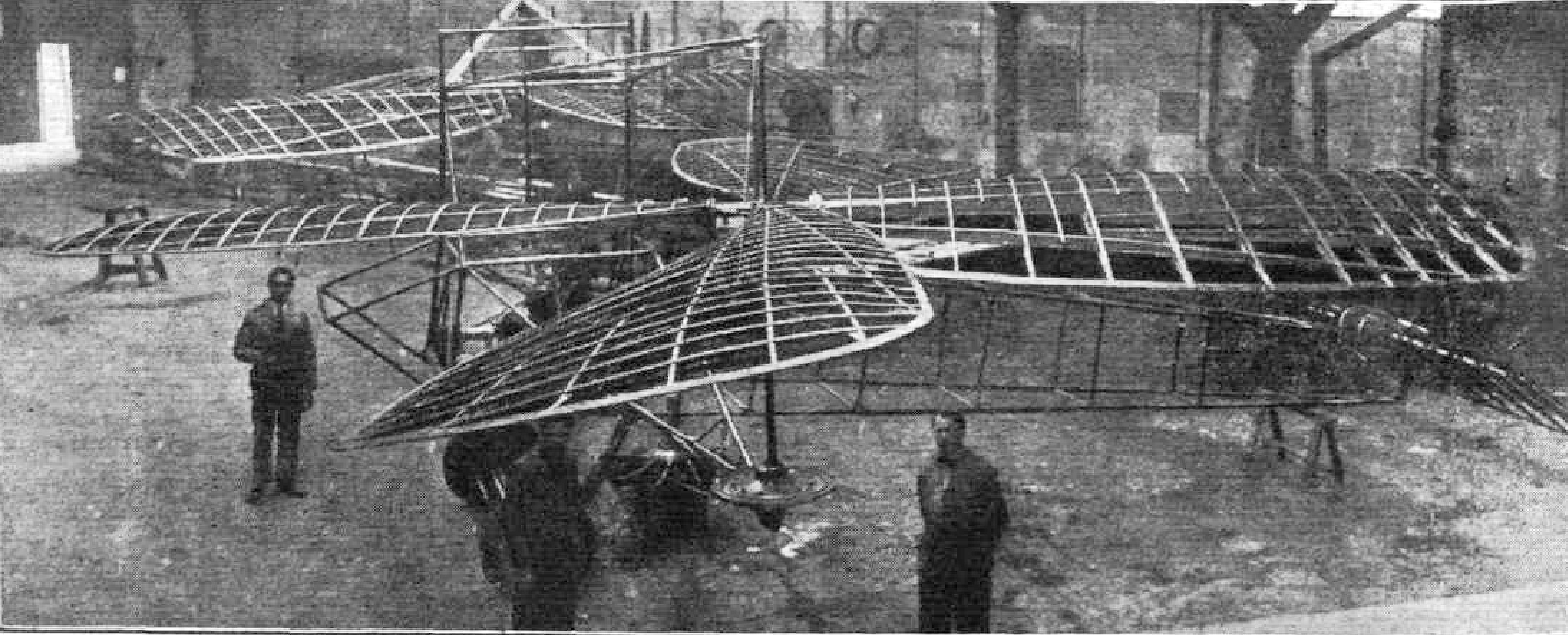|
Helowerks HX-1 Wasp
__NOTOC__ The Helowerks HX-1 is an American ultralight homebuilt helicopter A helicopter is a type of rotorcraft in which lift and thrust are supplied by horizontally spinning rotors. This allows the helicopter to take off and land vertically, to hover, and to fly forward, backward and laterally. These attributes ... designed by Helowerks based at Hampton in Virginia. Design and development The Wasp is a traditional pod and boom helicopter with a twin-blade rotor powered by a 90shp (97 kW) Garrett JFS-100-13A turboshaft engine. It has a fixed skid landing gear and enclosed cabin with two-seat side-by-side seats. The Wasp design was started in 2001 and was exhibited unflown in 2005, it first flew around March 2006 after receiving FAA approval in the experimental category. Specifications See also References ;Notes ;Bibliography * 2000s United States helicopters Homebuilt aircraft 2000s United States civil utility aircraft Aircraft first flown in 2006 ... [...More Info...] [...Related Items...] OR: [Wikipedia] [Google] [Baidu] |
Homebuilt Aircraft
Homebuilt aircraft, also known as amateur-built aircraft or kit planes, are constructed by persons for whom this is not a professional activity. These aircraft may be constructed from "scratch", from plans, or from assembly kits.Armstrong, Kenneth: ''Choosing Your Homebuilt - the one you will finish and fly! Second Edition'', pp. 39–52. Butterfield Press, 1993. Peter M Bowers: ''Guide to Homebuilts - Ninth Edition''. TAB Books, Blue Ridge Summit PA, 1984. Overview In the United States, Brazil, Australia, New Zealand and South Africa, homebuilt aircraft may be licensed Experimental under FAA or similar local regulations. With some limitations, the builder(s) of the aircraft must have done it for their own education and recreation rather than for profit. In the U.S., the primary builder can also apply for a repairman's certificate for that airframe. The repairman's certificate allows the holder to perform and sign off on most of the maintenance, repairs, and inspections them ... [...More Info...] [...Related Items...] OR: [Wikipedia] [Google] [Baidu] |
Helicopter
A helicopter is a type of rotorcraft in which lift and thrust are supplied by horizontally spinning rotors. This allows the helicopter to take off and land vertically, to hover, and to fly forward, backward and laterally. These attributes allow helicopters to be used in congested or isolated areas where fixed-wing aircraft and many forms of STOL (Short TakeOff and Landing) or STOVL (Short TakeOff and Vertical Landing) aircraft cannot perform without a runway. In 1942, the Sikorsky R-4 became the first helicopter to reach full-scale production.Munson 1968.Hirschberg, Michael J. and David K. Dailey"Sikorsky". ''US and Russian Helicopter Development in the 20th Century'', American Helicopter Society, International. 7 July 2000. Although most earlier designs used more than one main rotor, the configuration of a single main rotor accompanied by a vertical anti-torque tail rotor (i.e. unicopter, not to be confused with the single-blade monocopter) has become the most ... [...More Info...] [...Related Items...] OR: [Wikipedia] [Google] [Baidu] |
List Of Rotorcraft
This is a list of rotorcraft, including helicopters, autogyros, rotor kites and convertiplanes. A A-B Helicopters * A-B Helicopters A/W 95 American Aircraft International * AAI Penetrator Aero *Aero HC-2 Heli Baby Aero-Astra * Aero-Astra Okhotnik 1 Aero Eli Serviza *Aero Eli Serviza Yo-Yo 222 Aerokopter * Aerokopter AK1-3 Sanka Aerospace General * Aerospace General Mini-Copter Aérospatiale * Aérospatiale Alouette II *Aérospatiale Alouette III * Aérospatiale Cougar *Aérospatiale Dauphin * Aérospatiale Djinn * Aérospatiale Ecureuil * Aérospatiale Gazelle * Aérospatiale Lama * Aérospatiale Puma *Aérospatiale Super Frelon *Aérospatiale Super Puma Aerotécnica * Aerotécnica AC-11 * Aerotécnica AC-12 * Aerotécnica AC-14 Agusta * Agusta AZ.101G * Agusta AB.102 * Agusta A103 * Agusta A104 Helicar * Agusta A105 *Agusta A106 * Agusta A109 * Agusta A115 * Agusta A119 Koala *Agusta A129 Mangusta AgustaWestland * AgustaWestland AW10 ... [...More Info...] [...Related Items...] OR: [Wikipedia] [Google] [Baidu] |
2000s United States Helicopters
S, or s, is the nineteenth letter in the Latin alphabet, used in the modern English alphabet, the alphabets of other western European languages and others worldwide. Its name in English is ''ess'' (pronounced ), plural ''esses''. History Origin Northwest Semitic šîn represented a voiceless postalveolar fricative (as in 'ip'). It originated most likely as a pictogram of a tooth () and represented the phoneme via the acrophonic principle. Ancient Greek did not have a phoneme, so the derived Greek letter sigma () came to represent the voiceless alveolar sibilant . While the letter shape Σ continues Phoenician ''šîn'', its name ''sigma'' is taken from the letter ''samekh'', while the shape and position of ''samekh'' but name of ''šîn'' is continued in the '' xi''. Within Greek, the name of ''sigma'' was influenced by its association with the Greek word (earlier ) "to hiss". The original name of the letter "sigma" may have been ''san'', but due to the complic ... [...More Info...] [...Related Items...] OR: [Wikipedia] [Google] [Baidu] |
2000s United States Civil Utility Aircraft
S, or s, is the nineteenth letter in the Latin alphabet, used in the modern English alphabet, the alphabets of other western European languages and others worldwide. Its name in English is ''ess'' (pronounced ), plural ''esses''. History Origin Northwest Semitic šîn represented a voiceless postalveolar fricative (as in 'ip'). It originated most likely as a pictogram of a tooth () and represented the phoneme via the acrophonic principle. Ancient Greek did not have a phoneme, so the derived Greek letter sigma () came to represent the voiceless alveolar sibilant . While the letter shape Σ continues Phoenician ''šîn'', its name ''sigma'' is taken from the letter ''samekh'', while the shape and position of ''samekh'' but name of ''šîn'' is continued in the '' xi''. Within Greek, the name of ''sigma'' was influenced by its association with the Greek word (earlier ) "to hiss". The original name of the letter "sigma" may have been ''san'', but due to the ... [...More Info...] [...Related Items...] OR: [Wikipedia] [Google] [Baidu] |


